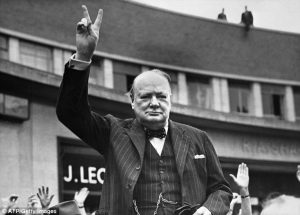The Start of the Decolonisation Process of the British Empire: The Dominions, and the Commonwealth.
The Dominions i.e: Australia, Canada, New Zealand, South Africa, Irish Free State and Newfoundland were for a few years accepted by the British government as states of full autonomy and equality with Britain. The Commonwealth of Nations was seen as this group of nations freely associating and linked by a common allegiance to the Crown, but in reality all was not in harmony. The solution which the British government devised in the 1920s for the Irish troubles was never satisfactory (namely the Irish Free State or Eire as it later came to be known). In the 1930s it increasingly went its own way. In South Africa, Afrikaner nationalism was growing in intensity and, taking advantage of the status of independence, brought in racial policies discriminating against black Africans and Asians. This marked a growing moral disunity within the Commonwealth. Meanwhile, the spirit of dissension was sweeping through India. Indian nationalism had been developing throughout the nineteenth century. Though full equality between India and the other white colonies had been promised in 1858, in practice it did not come about. A local press, which had been printing without restrictions since 1835, became increasingly critical of British rule after 1882. Three years later the Indian National Congress, an organisation to represent Indian political interests, was formed. At first this body spoke out moderately, as the elite band of educated middle class Indians hoped to insinuate themselves fully into the British system. However, by the beginning of the century, rising disillusionment with British control led to the emergence of a more extreme, nationalist splinter group. In this case as a contrast to the white settlement colonies, the British government did not contemplate conferring self-government upon India for some considerable time in the future. A slow path of political education was expected as necessary before Indians would be able to govern themselves to the satisfaction of the British. A start was made in 1882 when Lord Ripon instituted an elected majority for local municipal boards – local self-government – but political extensions at the higher levels of government came more slowly. For example, with Indian representatives elected indirectly to the provincial and central legislatures in 1892. At the executive level, Indians were put onto the Council of India and the Viceroy’s Executive Council in 1907 and 1909 respectively. Further extensions of the electoral principle were made in 1909, but the British government was making such political concessions too late to satisfy the demand for self-government which increasing numbers of Indian nationalists were making.
Although the British government still insisted upon the sharing principle, notably that at the provincial level authority be shared between British officials and elected Indian representatives, in 1919 further political powers were transferred to Indians. By this stage Indians, after assisting in Britain’s war effort, and after hearing widespread discussion of national self-determination at the Versailles Conference in Paris, were demanding an equal status with the Dominions. British repression, as at Amritsar in 1919 when hundreds of Indians were shot, only fanned Indian discontent higher. Gandhi was helping to frustrate British administration by leading a non-co-operation campaign and schemes of civil disobedience. The British government made further concessions in 1935, but still not sufficient to satisfy Indian demands. Similar status to the white settlement countries was simply promised, whereas Indians felt it should be instituted forthwith.



